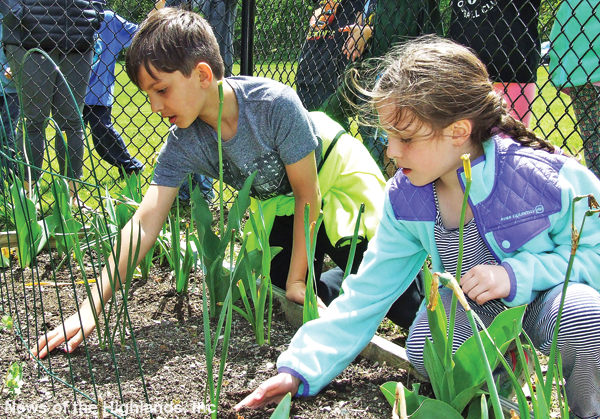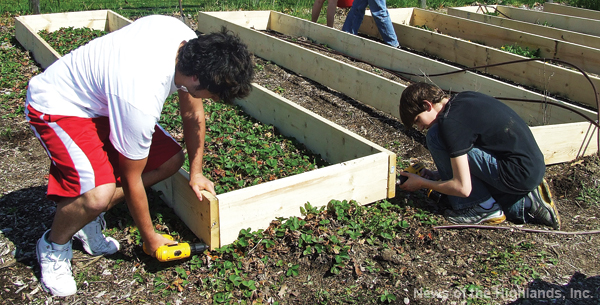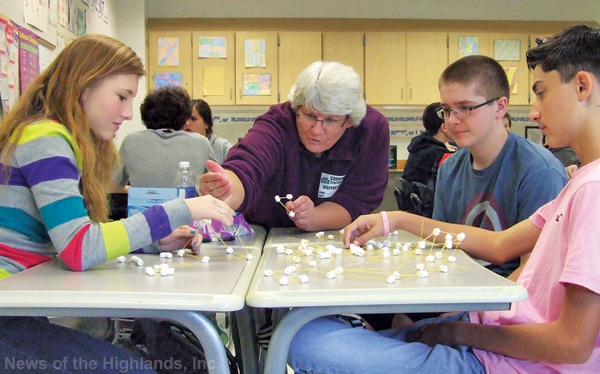
The third graders at Cornwall Elementary School got a little bit of a late start, but they should still be able to sample the produce they planted in their garden before the school year ends.
Last month, Master Gardeners from Cornell Cooperative Extension met with each of the five third grade classes to help them plant lettuce, radishes, and spinach. They were du to return for two more sessions – one toward the end of May and another in June.
“I started to investigate different ways to get the students more involved in the garden,” said Kim Patak who is part of the PTO Green Team which manages the garden. “The Master Gardeners volunteer their time. Teachers have a lot on their plates already. The PTO wanted to bring some lessons for the teachers to follow up or enhance what they’re [the students] learning about in the classroom. The garden is an extension of their classroom learning. The Master Gardeners just seemed like the perfect group to do it.”
The Master Gardeners have been helping the school for the last three years. The garden was created four years ago. Each third grade class has its own bed which it maintains until the summer.
On Monday, Brooke Moore taught Deborah Moore’s class how to plant seedlings and shared some interesting facts about the vegetables they were planting.
Holding up a packet of lettuce seeds, Moore explained the package includes all the information needed to sow crops.
She explained all three vegetables take a different amount of time to sprout. Lettuce will start to show between 10 and 14 days while spinach takes about a week to two weeks. Radishes, on the other hand, are known as the sprinters of the vegetable world. They start to sprout after four to six days. Even though the crops have cracked the surface of the soil, more time is needed before they can be harvested.
Radishes, like potatoes and carrots, are roots, Moore explained. The edible portion is also known as a swollen root or root body.
After sharing a few facts, Moore divided the class into three groups – each would get to plant one crop.
Moore told each group to use the edge of their hand, with fingers pointing out, to create a shallow line in the dirt. Seeds were then placed far enough apart to allow them room to move and grow.
The Master Gardeners returned this month to talk about planting a Three Sisters Garden (three crops that complement each other). In June, the gardeners will focus on composting or good bugs and bad bugs – which are beneficial to a garden and which are considered pests.



